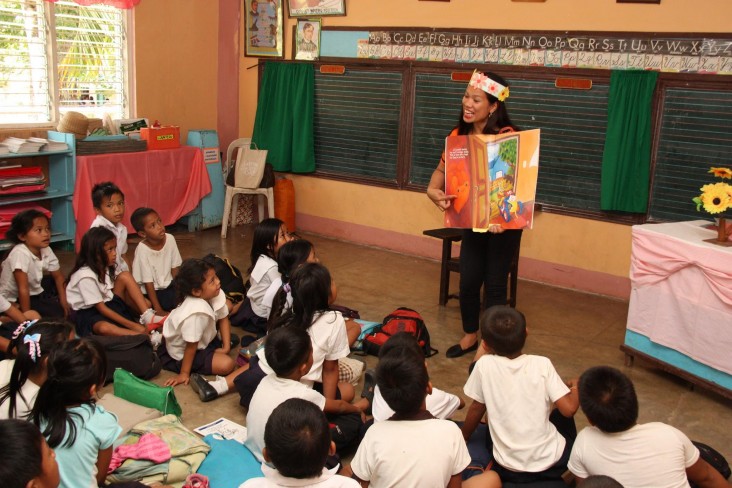
November 2016—Multigrade classrooms—which combine classes of students from at least two grade levels—are common in rural Philippine communities, where public schools must maximize limited resources. In such classrooms, teachers deliver different curricula for one grade level, while the other grade reads and completes assignments independently.
Student differences in native language and reading abilities, however, can significantly complicate the practice.
Marjorie Semana is a teacher at Madalayap Elementary School in Pasuquin, a municipality with a population of only 30,000 people located in the northern province of Ilocos Norte. She has been teaching first and second grade students in the same classroom for almost 10 years.
“Working in a multigrade set-up is challenging, especially in the early stages of schooling, because some pupils don’t have the subject background and some can’t even read yet,” says Semana.
Adding to this challenge is the low availability of books in students’ mother tongue in public schools. Evidence shows that use of mother tongue in early grades improves literacy.
A mother herself, Semana recognizes that children must gain strong reading skills early in their life. “Reading is the foundation for good education,” she says.
Responding to the need to improve basic literacy among early grade students in public schools, in 2013, USAID launched its $39.7 million Basa Pilipinas, or Read Philippines, program in partnership with the Philippine Department of Education. The program is designed to train first to third grade teachers how to teach reading more effectively.
Basa, implemented by Education Development Center, Inc., also developed reading material written in local dialects (Sinugbuanong Binisaya, Ilocano and Filipino) that focuses on themes and situations that relate to students’ culture and experiences, such as farming and venturing from a village into a city for the first time. This helps students draw personal connections to the text and ultimately increases comprehension.
In 2014, Semana participated in a USAID-supported training for teaching literacy in multigrade classes. The training equipped Semana with skills to engage students in interactive readings of children’s books to increase comprehension and foster critical thinking. Semana also learned how to guide students from familiar, predictable language and pictures to more complex and challenging texts with fewer pictures. This helps students develop their vocabulary and reading fluency.
USAID provided the learning materials, along with guides to help teachers integrate the lessons into their classrooms. “The guides include clear directions on how to present activities and prescribe which materials to use,” explains Semana. This has strengthened her teaching abilities and, consequently, improved her students’ reading performance, she says. Semana’s students are now more excited to read, and some can already read a full level above their current grade.
Since 2013, Basa has trained nearly 13,000 public school teachers on effective reading instruction, and provided more than 8 million books and learning materials, contributing to the development of 1.6 million new readers in the Philippines and unlocking young people’s potential for growth and productivity.







Comment
Make a general inquiry or suggest an improvement.